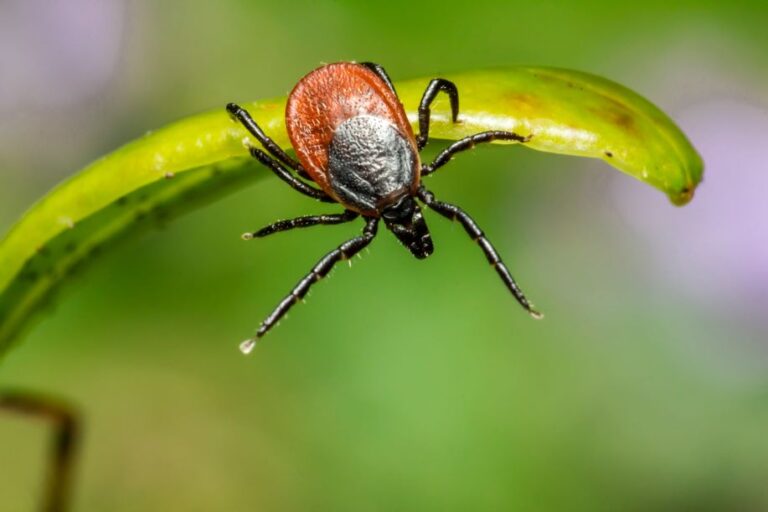By Anand Persad, Ph.D.
As the climate continues to change, we’ll likely begin to see invertebrate vectors, such as mosquitos, fleas, lice and ticks, adapting to potentially more favorable weather conditions.
On a global scale, the World Health Organization (WHO) reports that every year, there are more than 700,000 deaths from vector-borne diseases such as the West Nile virus, malaria, dengue, yellow fever and more.
While these diseases may not be currently prevalent in the United States as they are in other parts of the world, when subjected to the impacts of climate change, there is potential for more dynamic and even migrating vector populations.
Take the impact of flooding coupled with increasing temperatures for example. Chances are we will begin to see rising sea levels, backed-up brackish (slightly salty) water and freshwater levels and generally higher water levels in inland areas. This will lead to areas with saturated and increased moisture levels, the rise of vectors and possibly the increasing spread of vector-borne diseases.
For example, the more mosquitoes that inhabit an area, there is a greater potential for mosquito-borne outbreaks such as West Nile, dengue and malaria. Additionally, as human populations increase in high-density, urban areas, the chance of vector-borne diseases also increases.
Warmer temperatures also create the perfect environment for these insects to multiply faster. In turn, it may be easier for vectors to maintain high populations, bolstered by shorter lifecycles and increase the number of generations per year.
Even if temperatures rise by half to one degree over the next decade or so, it will still be in favor of rising vector populations.
According to the Human Impact Report: Climate Change — The Anatomy of a Silent Crisis published by the Global Humanitarian Forum, currently “over half a billion people are at extreme risk to the impacts of climate change, and six in 10 people are vulnerable to climate change in a physical and socio-economic sense.”
The Human Impact Report also shares, “the number of those severely affected by climate change is more than ten times greater than for instance those injured in traffic accidents each year, and more than the global annual number of new malaria cases.”
Looking to the future
The Global Humanitarian Forum anticipates the number of affected individuals to double — if not more — within the next 20 years, noting “one in ten of the world’s present population could be directly and seriously affected” by vector-borne diseases.
In the green industries, it’s important to consider the impact of increasing vectors, disease incidence, the effect on green workspaces, and our physical and mental health. We must consider and understand that employees are subject to encounters with ticks for example, thus increasing the likelihood of becoming infected with Lyme disease (among other diseases and illnesses) by working outdoors daily.
There is an imbalance when studying climate research. There isn’t an abundance of studies that showcase the parallels between climate change and the potential impact on our health caused by the spread of vector-borne diseases.
It’s fair to question whether these risks will take a toll on employees’ mental health or even lead to attrition within the workforce. That’s why our Research, Science and Innovation team at ACRT Services is looking at the correlative imbalances between climate change and vector migration.
Acclimating to change
As vectors continue to adapt to climate change, so must our workforce — especially those in the southern tier of the United States.
Think about warm, humid places like Florida. As the climate continues to mimic a tropical environment, we will likely see more vibrant vector populations and diseases that have been historically tropically based may now begin to appear with increasing frequency, such as yellow fever, dengue and malaria.
Protect yourself while outdoors
It’s impossible to reverse climate change overnight, but it is possible to better protect ourselves — especially while outdoors.
An infographic provided by ACRT outlines several ways to protect yourself from pesky pests, including mosquitos, bees and wasps, ticks, chiggers, spiders and other stinging insects (see https://acrt.com/articles/protect-pesky-pests/).
Keep the following best management practice recommendations in mind to reduce your exposure to insect bites.
- Apply both repellents and insecticides, or approved alternatives regularly, and by following the instructions found on the label.
- Be sure to apply a pesticide, such as Permethrin, to your outerwear — including footwear and work gear. Clothing that is pre-treated with Permethrin is also available for purchase.
- If you’re having trouble determining what to apply, consider using the United States Environmental Protection Agency’s search tool (https://www.epa.gov/insect-repellents) to help choose the repellent product that is right for you.
- Wear the appropriate type of clothing provides an additional barrier to prevent ticks (and other insects) from reaching the skin.
- Conduct frequent body checks throughout the day, followed by a full-body check at the end of each shift.
Despite the intimidation of climate change and the dangers that may accompany it, many of these vector-borne diseases are preventable through research, protective measures and education.
Anand Persad, Ph.D., is the director of the Research, Science, and Innovation (RSI) team at ACRT Services. He has an extensive background in arboriculture, invasive species, tree biomechanics, pollinator health, wetland restoration, avian studies, and more. He is the research committee chair for the Utility Arborist Association (UAA), chair of the International Society of Arboriculture (ISA) Science and Research Committee, and actively works with city, state, and federal organizations in taking innovation and technology from development to implementation. He holds a Ph.D. in invertebrate ecology/entomology from the University of the West Indies. In 2021, he was recognized as the recipient of the ISA L.C. Chadwick Award for Arboricultural Research as well as the Award of Achievement by the Ohio Chapter of the ISA.
Editor’s note: This article originally appeared on Landscape-Business.com, sister production to SportsField Management magazine.


